English Heritage sites near Stokeinteignhead Parish
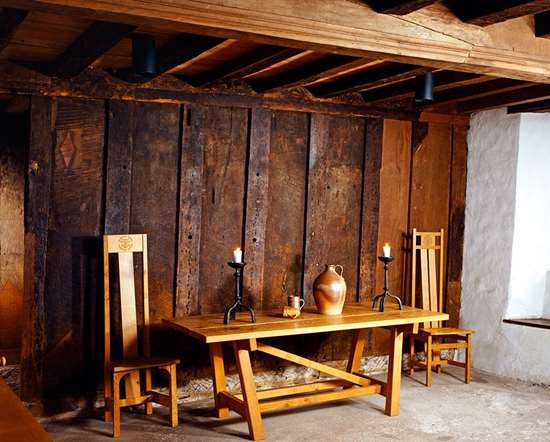
KIRKHAM HOUSE, PAIGNTON
6 miles from Stokeinteignhead Parish
This late medieval stone house, afterwards split into three cottages was restored in the 1960s.
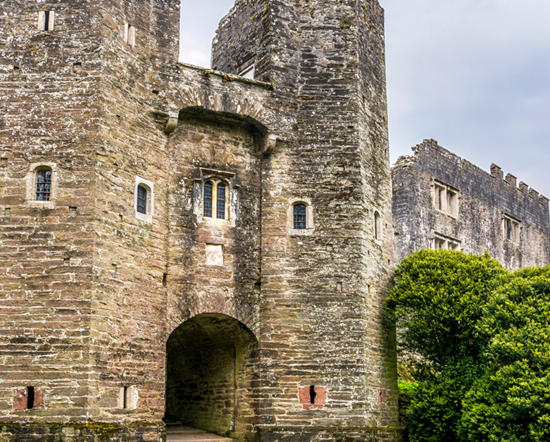
BERRY POMEROY CASTLE
7 miles from Stokeinteignhead Parish
Tucked away in a steep wooded valley, Berry Pomeroy Castle is the perfect romantic ruin.
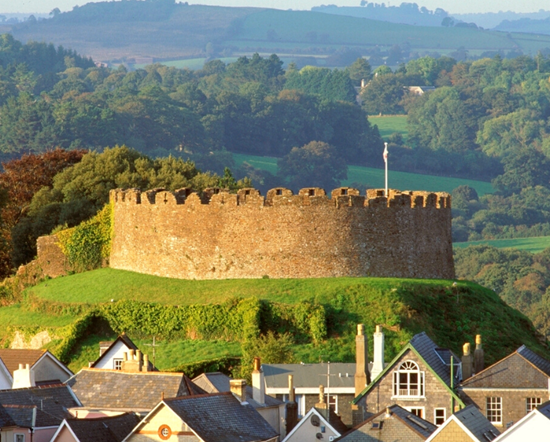
TOTNES CASTLE
9 miles from Stokeinteignhead Parish
A classic Norman motte and bailey castle, founded soon after the Conquest to overawe the Saxon town. A later stone shell-keep crowns its steep mound, giving views across the town to the River Dart.
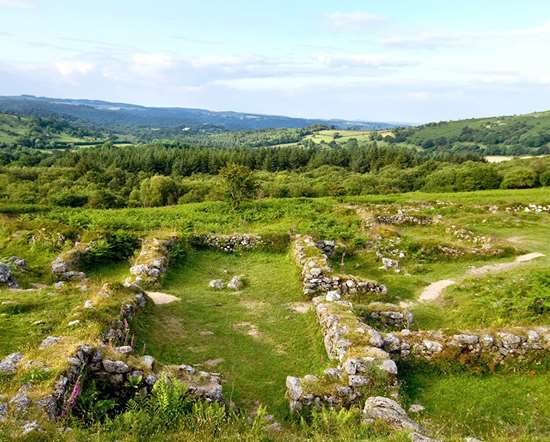
HOUND TOR DESERTED MEDIEVAL VILLAGE
12 miles from Stokeinteignhead Parish
The remains of four 13th century stone farmsteads, on land originally farmed in the Bronze Age. This isolated Dartmoor hamlet was probably abandoned in the early 15th century.
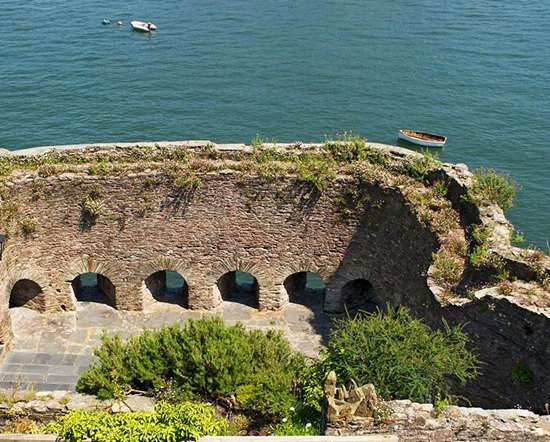
BAYARD'S COVE FORT
12 miles from Stokeinteignhead Parish
Picturesquely sited on the quayside at Darmouth, this Tudor artillery fort once contained heavy guns to protect the prosperous harbour town from attack.
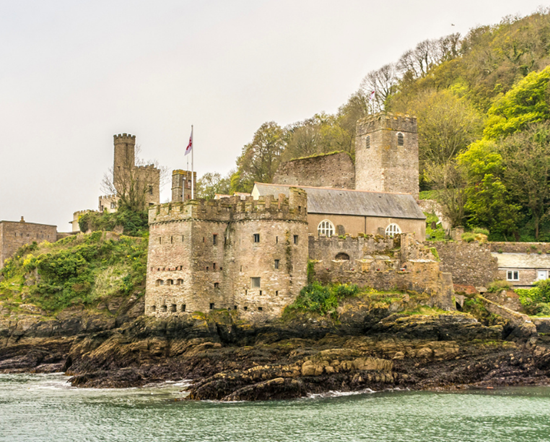
DARTMOUTH CASTLE
13 miles from Stokeinteignhead Parish
Beautifully located fortresses on the edge of the river. For over 600 years Dartmouth Castle has guarded the Dart Estuary and the busy, vibrant port of Dartmouth.
Churches in Stokeinteignhead Parish
St Andrew, Stokeinteignhead

Stokeinteignhead
Newton Abbot
01626 873614
https://standrewschurchstokeinteignhead.wordpress.com/
The red sandstone Church of St. Andrew stands to welcome you on a steep slope just above the rooftops of the ancient village of Stokeinteignhead. The church, though much restored, is still satisfying as a village church; it maintains its imposing west end tower and clock and the interior is light and spacious. It is easy to see that this was once a cruciform church, with the aisles being added later.
The church is dedicated to St. Andrew. The date of dedication is not known, but must have been early in the 13th century. It originally consisted of Nave and Chancel only which were built about AD 1270.
Henry de Bracton, known as the father of English Law, was instituted as the first Rector of Stoke and Combe churches in 1259. On 24th September 1279, Bishop Bronescombe of Exeter instituted John de la Thorre as Rector and, as will be seen from the list of rectors in the North Transept there has been a continuous succession since then.
One of the Rectors, Thomas Tagell, who was instituted in 1361, is remembered by a fine brass memorial set in the floor of the Sanctuary beside the Altar, depicting a fully vested priest. Pevsner considers it to be circa 1375, which makes it the earliest brass in Devon.
On May 14th 1336 Bishop Grandison consecrated the High Altar. In the fifteenth century the Aisles were added to the original Nave, and the Church looked much as you now see it.
As you enter the south porch with its particularly fine sandstone doorway, notice the Great Door. It is thought that the original door, probably 600 years old, is encased in the more modern timber. The loak and key (which weigh 1 ¼ lb) are ancient.
The village stocks survive too, and are in the North Transept. It is very unusual to have room for three malefactors.
Inside, the absence of stained glass windows makes the Nave light, and gives an impression of spaciousness. The carving of the white Beer stone capitals of the red Devon sandstone pillars, which support the roof of the Nave are worthy of notice. The capitals at the East end are probably older than the others. The one on the right of the door on entry, with angels at the corners, shows St. Catherine with the wheel and St. Appollonia with the pincers, by which they were martyred. The other two figures are St. Dorothea, with a bunch of flowers, and St. Barbara. The capital on the left has figures of St. Andrew, patron saint of the church; with his cross; St. Peter, with a key; St. James the Less, with his pilgrim's staff; and St. Bartholomew.
The Chancel and Sanctuary of the Church were rebuilt in 1865 having fallen almost into ruins. The Chancel retains a Decorated piscine. The Clergy and Choir's stalls, the Pulpit, the Lectern, and the Belfrey Screen are also comparatively modern. They are memorials or gifts, such as the ring of six bells, the earliest of which is dated 1676. The wrought iron Font Cover is recent and is decorated with gilded flowers from a book on wild flowers, " Concise British Flora in Colour", written and illustrated by the Rev. Dr William Keble Martin, one time Rector of the adjoining parish of Combeinteignhead. The wagon-shaped roof, with carved bosses, is fine, modern work.
The Church has many fine objects of interest, its most remarkable treasure being its beautiful, fine oak Chancel Screen dating from Richard II. It is quite unlike the usual Devonshire type, being over 500 years old, and is believed to be the oldest in the county. It has been well restored, but the panels, which were originally painted with saintly figures, have been renewed. Notice the old border of golden leaves and birds in the vine.
In the North Transept is the ancient doorway and complete staircase, to the left of the Pulpit, leading up to the top of the Screen. Here once stood a Crucifix with two figures called the Rood. Until the Reformation, access was necessary to light the candles, near the Crucifix and the Rood, which always stood above the Screen. Ancient piscinas in the walls of both North and South Transepts show that, in early days, there were Altars here.
Notice in front of the Lectern the perfect little heart-shaped brass ornamented with skull and crossbones, Time's Scythe and Hour Glass, and with an inscription in early French. It marks the grave of Elizabeth Furlong , who died on November 14th 1641. The family of Furlong owned the Manor of Gabwell in the parish.
There is a curious memorial to the members of the Graeme family of Inchbrakie, nine of whom "suffered in their country's cause", erected by Colonel Graeme.
On your way from the church notice the base of the old granite cross on the left hand side.
The other valuable and interesting possessions of the Church cannot, unfortunately, be left open for inspection, but the Rector will be glad to show them to those who are particularly interested.
The Registers are complete from the year 1538. As it was only in this year that the King's Government ordered a book to be provided for entering Baptisms, Marriages and Burial in every parish, "Stoke-in Ten- Hyde" (as Leland calls it just about this time) was very prompt in obeying the order.
Pubs in Stokeinteignhead Parish
Church House Inn

Stokeinteignhead, TQ12 4QA
(01626) 872475
thechurchhouseinn.pub
